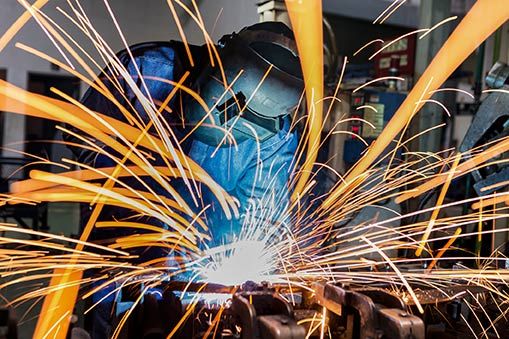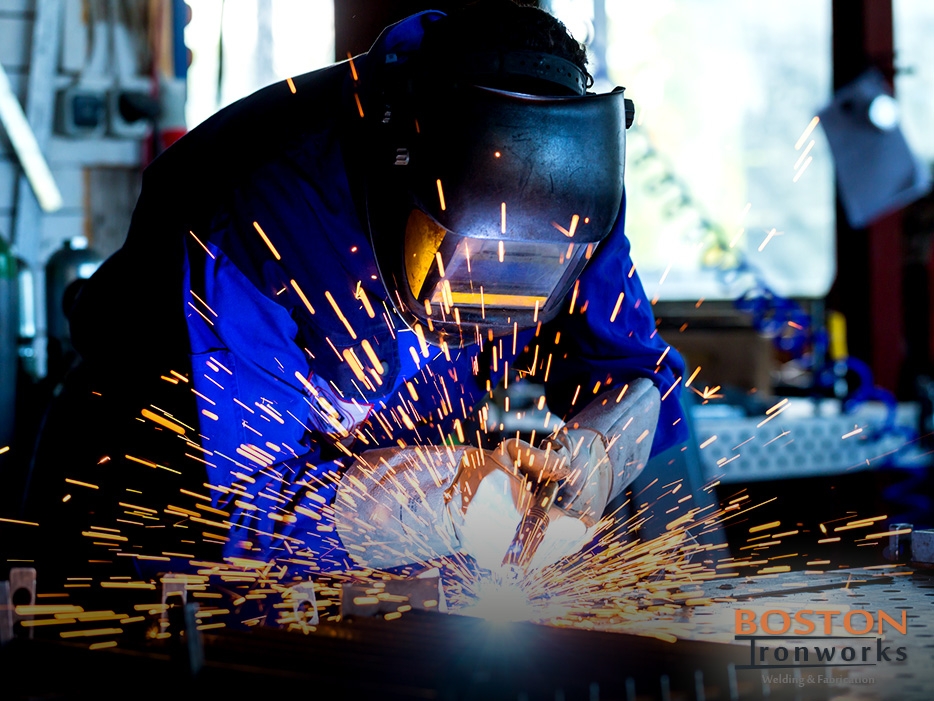Typical Welding Repair Work Issues and Just How to Address Them Effectively
Welding repair work typically run into a variety of concerns that can jeopardize the stability of the last product. Usual problems include poor infiltration, porosity, and misalignment, to name a few. Each defect presents unique obstacles that require details strategies for resolution. Comprehending these issues is crucial for welders intending to improve their abilities and results. This conversation will check out these typical welding repair service issues and effective methods to resolve them.
Poor Penetration
Insufficient infiltration takes place when the weld metal stops working to completely fuse with the base product, leading to weak joints and potential architectural failings. This issue commonly stems from inadequate warmth input, inaccurate electrode angle, or inappropriate welding speed. Welders may come across poor penetration as a result of a miscalculation of the necessary specifications for a details material density or type. In addition, contamination on the base material's surface can hinder reliable bonding, worsening the problem. To deal with poor penetration, welders must guarantee appropriate setups on their tools and maintain a tidy work surface. Normal examination of welds is recommended to identify any type of shortages early, permitting timely modifications and the avoidance of compromised structural stability in bonded assemblies.
Porosity
Porosity is a common defect in welded joints that materializes as small gas bubbles entraped within the weld steel. This problem can jeopardize the honesty of the weld, resulting in minimized stamina and possible failing under stress and anxiety. Fabrication. Porosity usually occurs from contamination, dampness, or inappropriate welding methods, which permit gases to run away right into the molten weld swimming pool. To address porosity, welders must assure proper surface prep work, maintain a tidy workplace, and utilize ideal welding criteria. Additionally, choosing the ideal filler material and securing gas can mitigate gas entrapment. Routine examination and screening of welds can help determine porosity early, guaranteeing prompt corrective actions are taken, therefore maintaining the quality and integrity of the welded structure
Misalignment
Misalignment in welding can develop from numerous factors, consisting of improper configuration and thermal growth. Comprehending the origin triggers is essential for reliable resolution. Numerous improvement techniques are readily available to straighten parts and guarantee architectural honesty.
Reasons for Misalignment
Welding misalignment often comes from a range of underlying concerns that can jeopardize structural honesty. One primary reason is improper fit-up of components prior to welding, which can result in gaps and uneven surfaces. Variants in thermal growth during the welding procedure can also result in distortion, specifically if the products being joined have different coefficients of growth. Furthermore, insufficient fixturing and clamping might fail to hold parts safely in position, resulting in movement during welding. Poorly conserved equipment, including welding equipments and tools, may present variances in the weld grain, more adding to misalignment. Operator mistake, stemming from insufficient training or experience, can also play a substantial function in producing misaligned welds.

Correction Techniques Offered
Attending to misalignment properly calls for a mix of restorative methods tailored to the specific issues at hand. One usual approach is using components or jigs to hold components in the proper position throughout welding, making sure constant alignment. Furthermore, preheating the materials can help decrease distortion and improve fit-up. For significant misalignment, mechanical realignment strategies, such as making use of hydraulic jacks or clamps, can be utilized to fix the setting before welding. Post-weld heat therapy may also be required to soothe tensions caused by imbalance. Finally, careful assessment and change during the setup stage can prevent misalignment problems from becoming significant issues, promoting a smoother welding process and improving general architectural stability.
Distortion
Distortion is a common obstacle in welding that can emerge from numerous aspects, consisting of unequal heating and air conditioning. Understanding the causes of distortion is crucial for applying reliable avoidance methods. Addressing this issue not only enhances structural honesty but additionally enhances the overall top quality of the weld.
Reasons for Distortion
When based on the extreme warm of welding, materials typically undertake modifications that can result in distortion. This phenomenon largely emerges from thermal expansion and contraction during the welding procedure. As the weld area warms up, the material increases; upon air conditioning, it acquires, which can produce interior anxieties. Furthermore, uneven heating across a work surface can aggravate these stress and anxieties, leading to bending or bending. The type of material likewise plays a considerable role; steels with varying thermal conductivity and coefficients of development might react in a different way, bring about unforeseeable distortions. Poor joint layout and poor fixturing can contribute to misalignment throughout welding, increasing the chance of distortion. Recognizing these reasons is necessary for efficient welding repair and prevention approaches.
Prevention Techniques
Effective prevention methods for distortion during welding focus on controlling warm input and making certain appropriate joint design. Keeping a constant warm input assists to minimize thermal development and tightening, which can bring about distortion. Utilizing strategies such as preheating the workpiece can additionally decrease the temperature gradient, advertising consistent home heating. Furthermore, selecting proper joint designs, such as T-joints or lap joints, can improve stability and minimize anxiety concentrations. Implementing appropriate fixturing to protect the work surfaces in position further aids in maintaining placement throughout the welding process. Ultimately, staggered welding sequences can disperse warm more evenly, stopping localized distortion. By using these strategies, welders can substantially lower the chance of distortion and enhance the overall quality of their welds.
Fracturing
Splitting is a common concern run into in welding repairs, commonly resulting from numerous factors such as improper cooling prices, material option, or inadequate joint preparation. The event of cracks can considerably jeopardize the stability of the weld, resulting in possible failures throughout operation. To resolve this problem, welders need to initially evaluate the origin, making sure that products are suitable and suitably picked for the particular application. Additionally, controlling the air conditioning rate throughout the welding process is important; quick air conditioning can cause anxiety and cause breaking. Correct joint layout and prep work additionally add to minimizing the danger. Executing these techniques can enhance weld top quality and sturdiness, ultimately lowering the chance of splitting in finished weldments.

Incomplete Fusion
A substantial issue in welding repairs is incomplete fusion, which happens when the weld metal does not properly bond with the base material or previous weld passes - Fabrication. This problem can result in weaknesses in the joint, possibly jeopardizing the integrity of the bonded framework. Factors adding to insufficient combination include inadequate heat input, inappropriate welding strategy, and contamination of the surfaces being joined. To address this concern properly, welders ought to ensure proper pre-weld cleansing and surface area preparation, in addition to adjust their welding parameters to attain appropriate infiltration and fusion. Routine assessment during the welding process can likewise help recognize incomplete fusion early, permitting prompt restorative procedures to boost the general top quality of the weld
Overheating
While welding fixings can enhance architectural honesty, mig brazing overheating offers a significant obstacle that can you can find out more result in product degradation. Excessive warmth during welding can alter the mechanical residential properties of steels, causing lowered toughness, enhanced brittleness, and bending. This phenomenon is especially essential in high-stress applications where structural dependability is critical. Determining getting too hot can involve visual examinations for staining or distortion, in addition to keeping an eye on temperature throughout the welding process. To mitigate the dangers linked with getting too hot, welders ought to employ proper techniques, such as managing heat input, changing travel speed, and utilizing ideal filler products. In addition, applying pre- and post-weld heat treatments can help restore material residential properties and boost the general top quality of the repair work, guaranteeing lasting efficiency and safety.
Frequently Asked Questions
What Are the Usual Indications of a Welding Issue?

Exactly How Can I Test My Welds for Top quality?
To test welds for high quality, one can use aesthetic assessments, ultrasonic testing, and radiographic methods. Each method assures structural integrity, determines problems, and confirms adherence to defined requirements, ultimately enhancing the reliability of the welded joints.
What Security Safety Measures Should I Take While Welding?
When welding, one must prioritize security by using proper personal protective tools, ensuring proper ventilation, securing flammable materials away, maintaining a clean work area, and understanding surroundings to avoid injuries and accidents.
Can I Fix a Weld Without Renovating the Entire Joint?
Repairing a weld without remodeling the entire joint is possible, depending on the damages (Montana Mobile Welding and Repair Belgrade Welding). Methods such as grinding, including filler material, or using a welding procedure can successfully attend to particular problems while maintaining the bordering structure
What Tools Are Necessary for Efficient Welding Repair Works?
Crucial tools for effective welding repairs consist of a welding maker, cord brush, mill, protective equipment, clamps, and filler products. Each tool plays a vital role in making certain quality and safety and security throughout the repair service process. Porosity normally develops from contamination, wetness, or improper welding techniques, which permit gases to get away right into the molten weld swimming pool. Improperly conserved tools, consisting of welding devices and tools, may present inconsistencies in the weld grain, further adding to imbalance. When subjected his explanation to the extreme heat of welding, products commonly go through modifications that can lead to distortion. Breaking is an usual issue experienced in welding repair services, often resulting from numerous aspects such as inappropriate cooling rates, material selection, or insufficient joint preparation. A substantial issue in welding repair services is insufficient blend, which takes place when the weld metal does not sufficiently bond with the base material or previous weld passes.